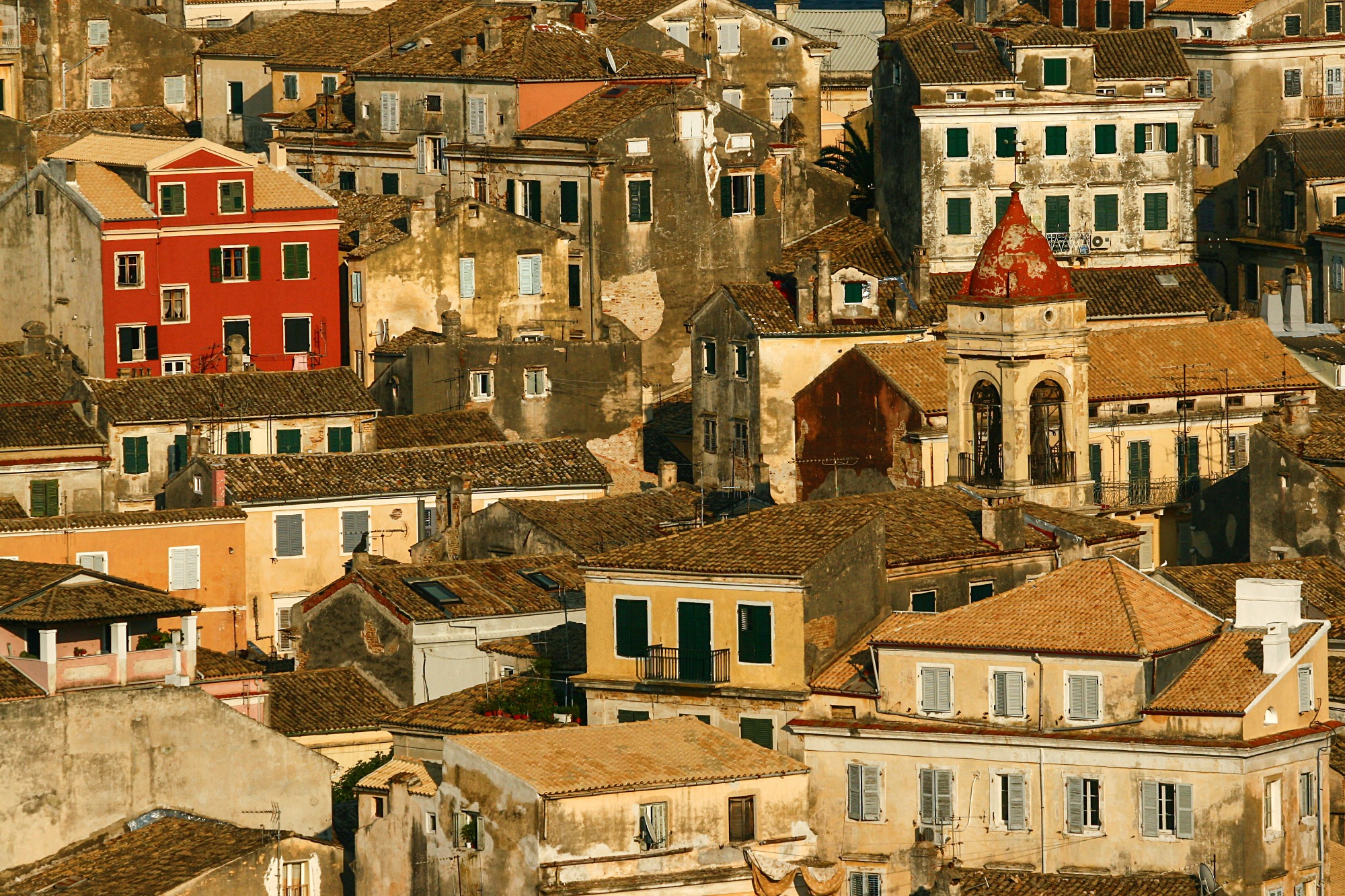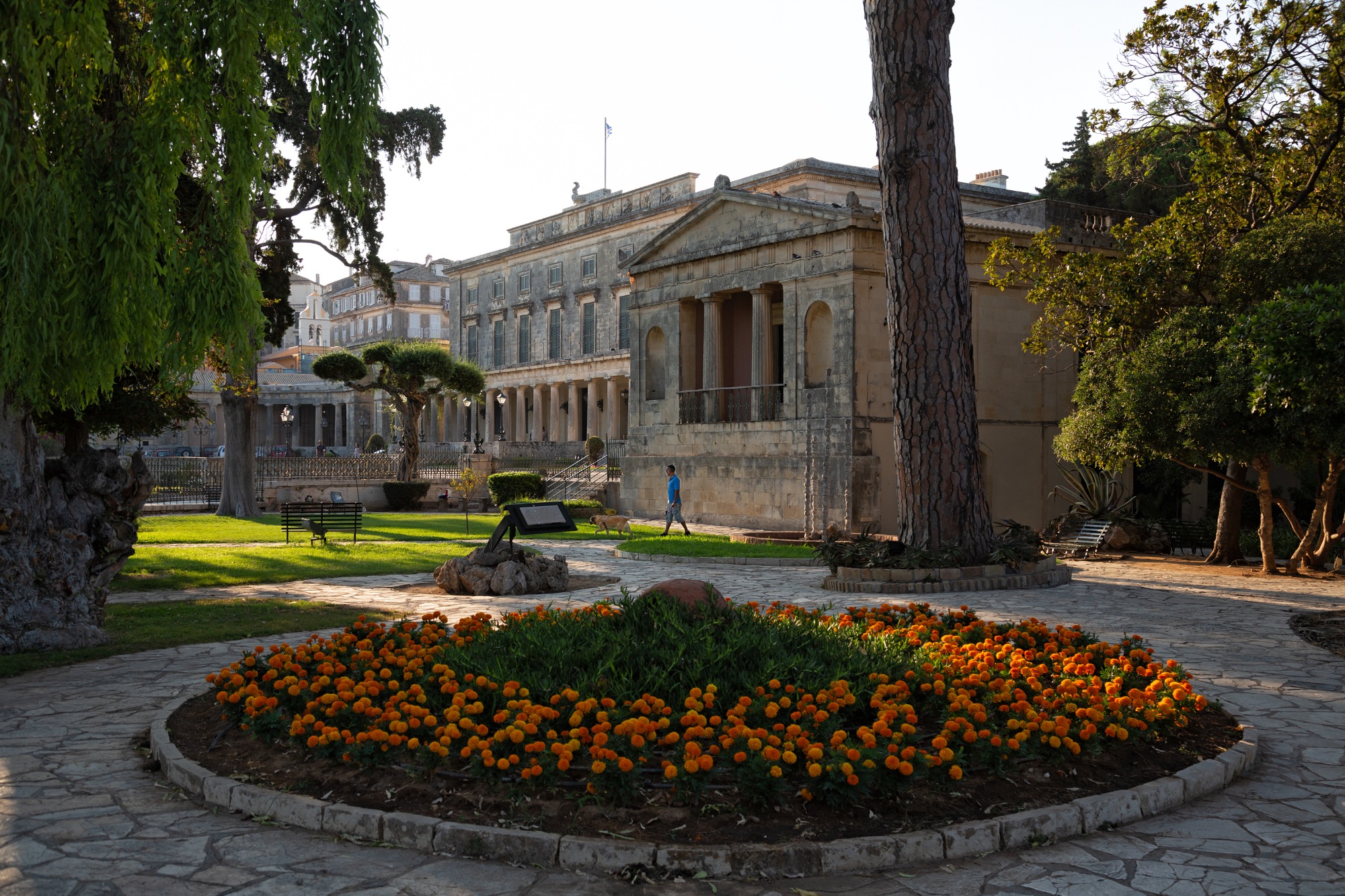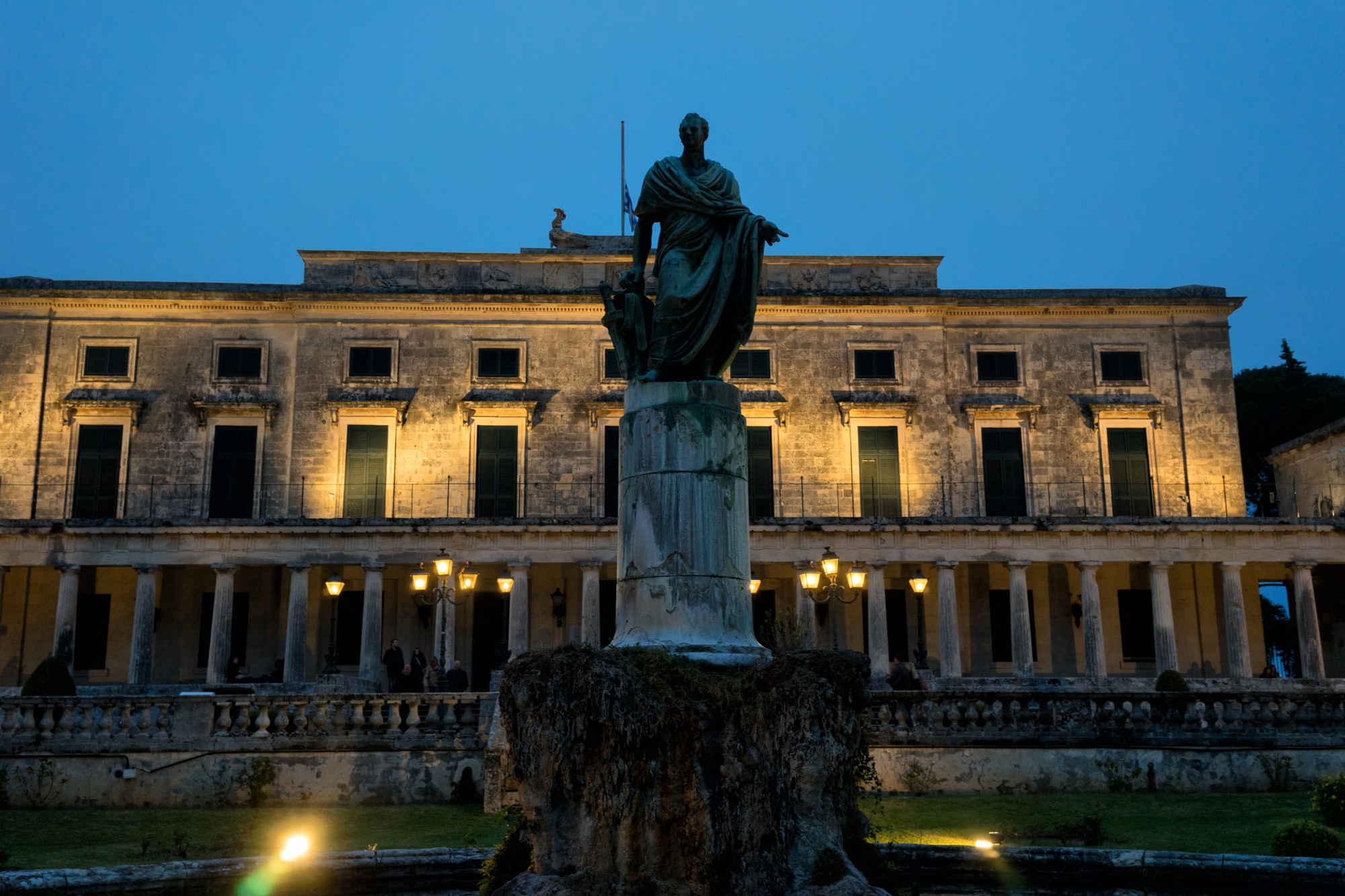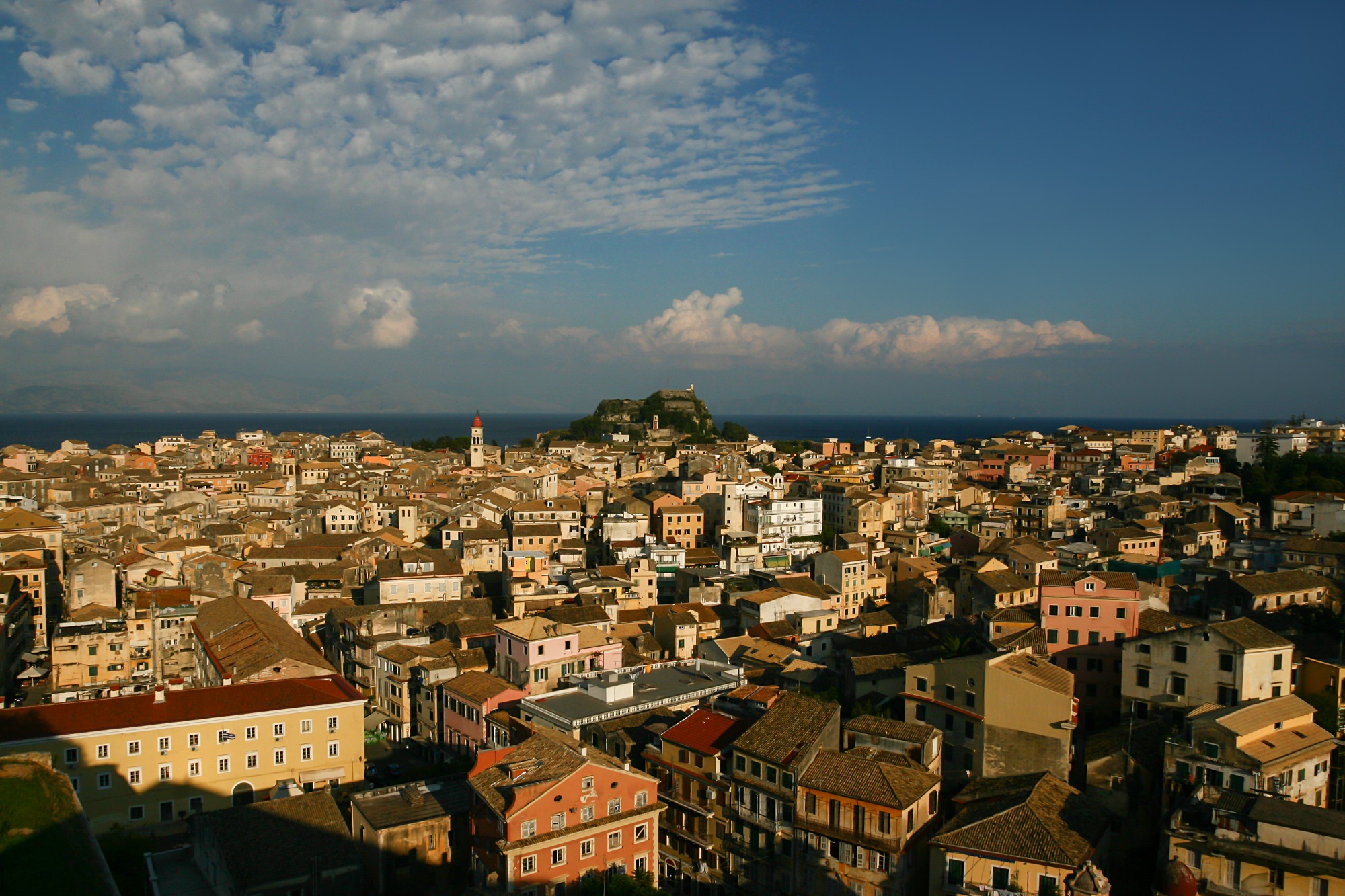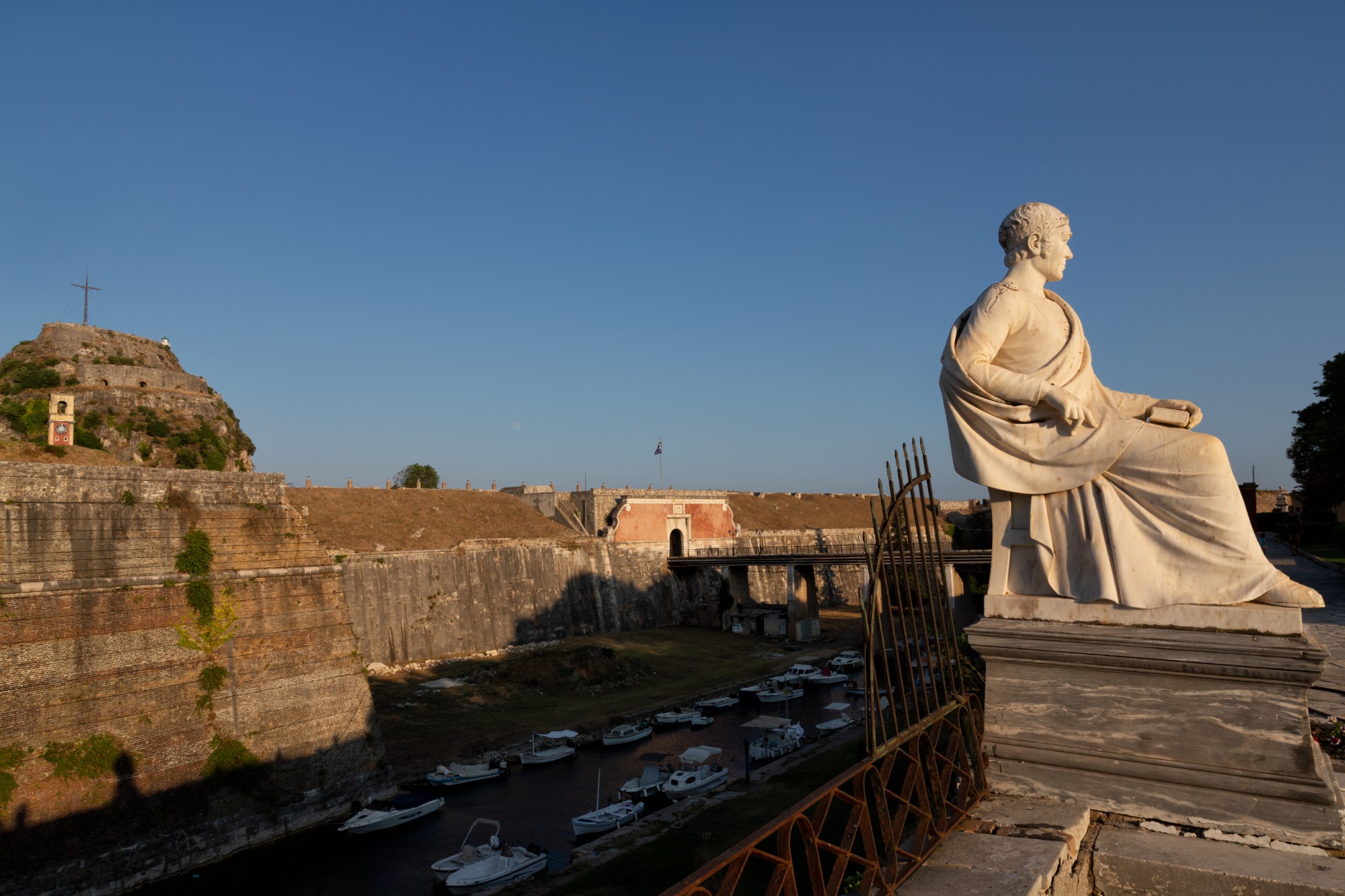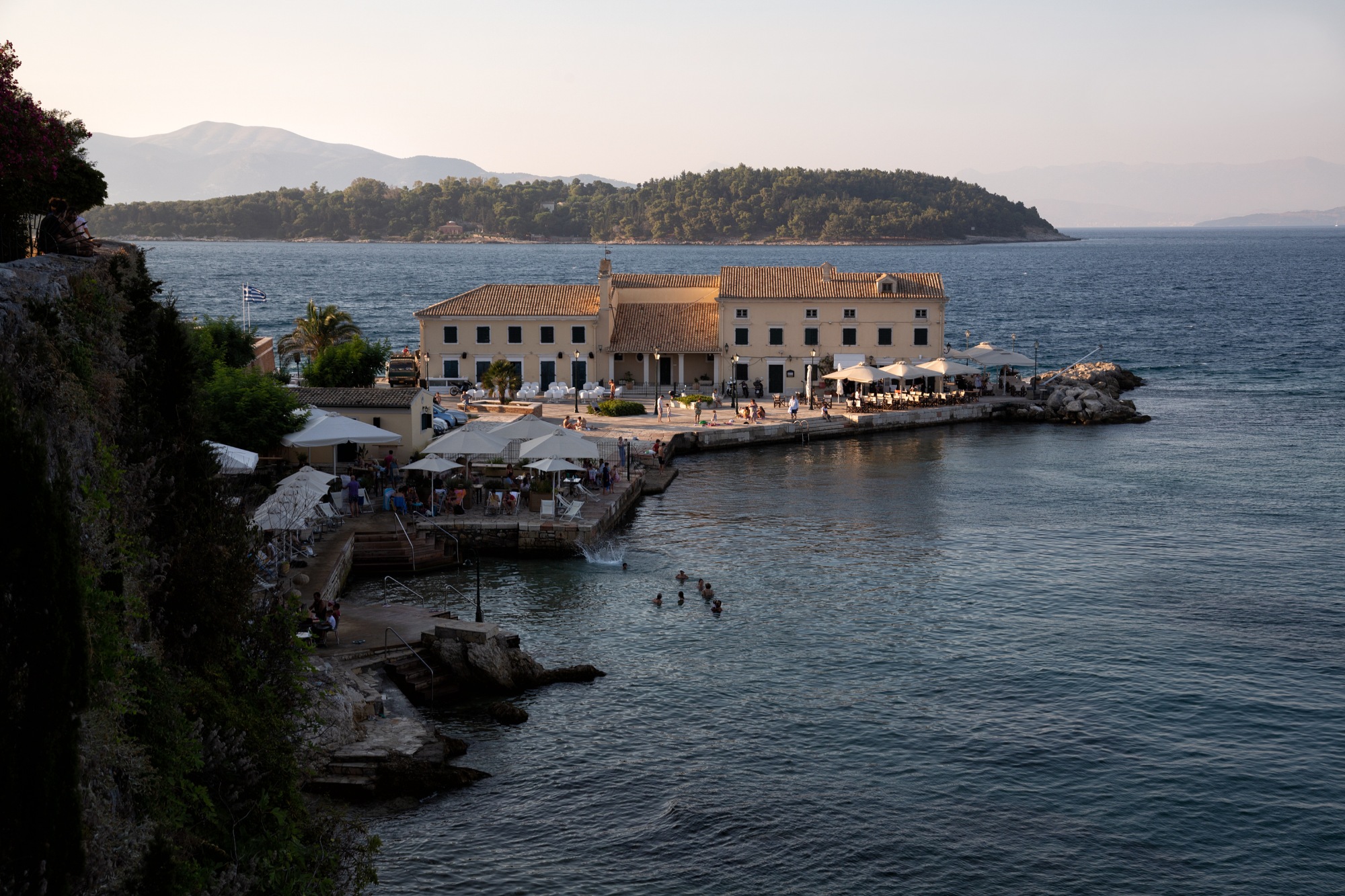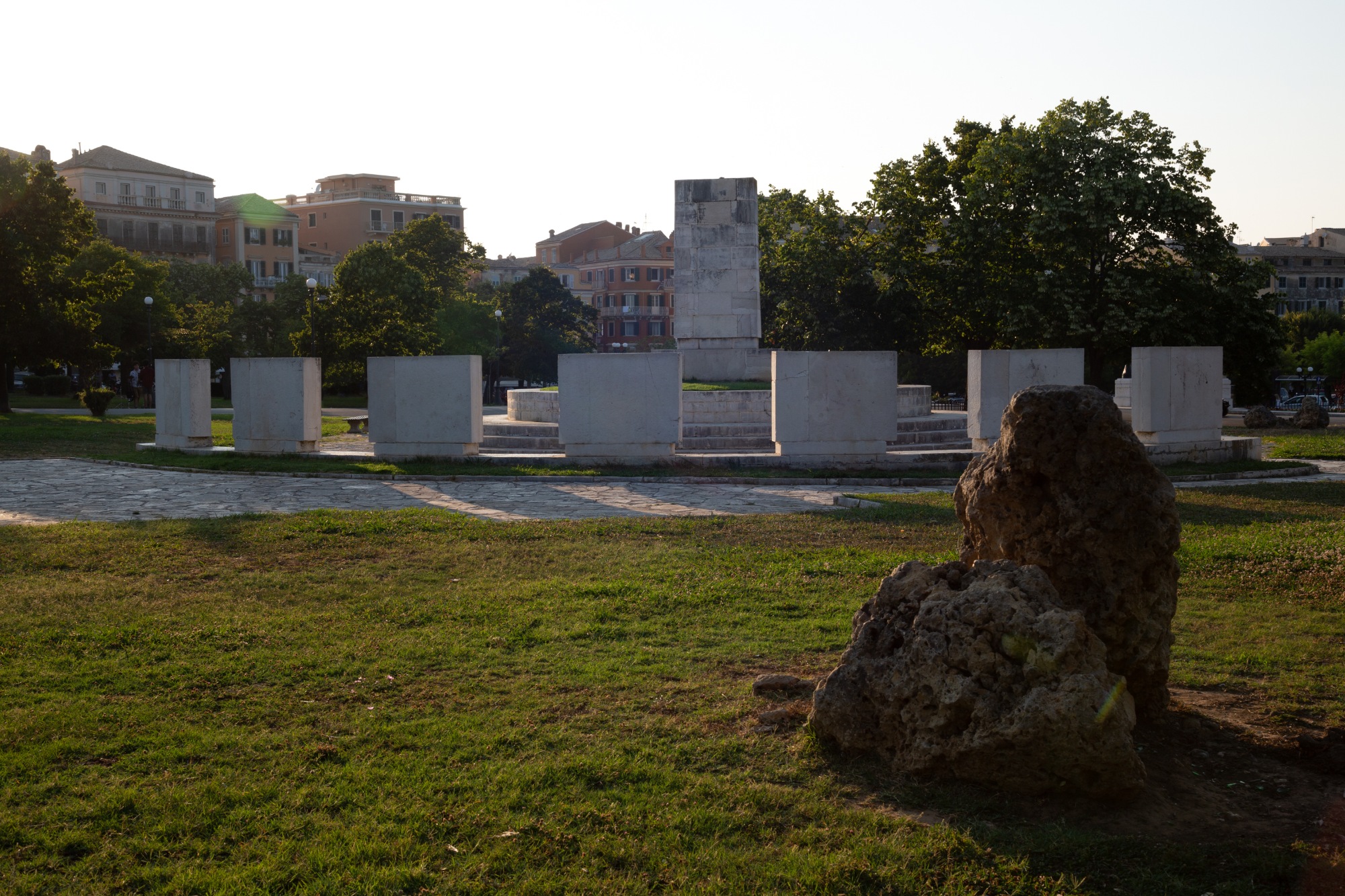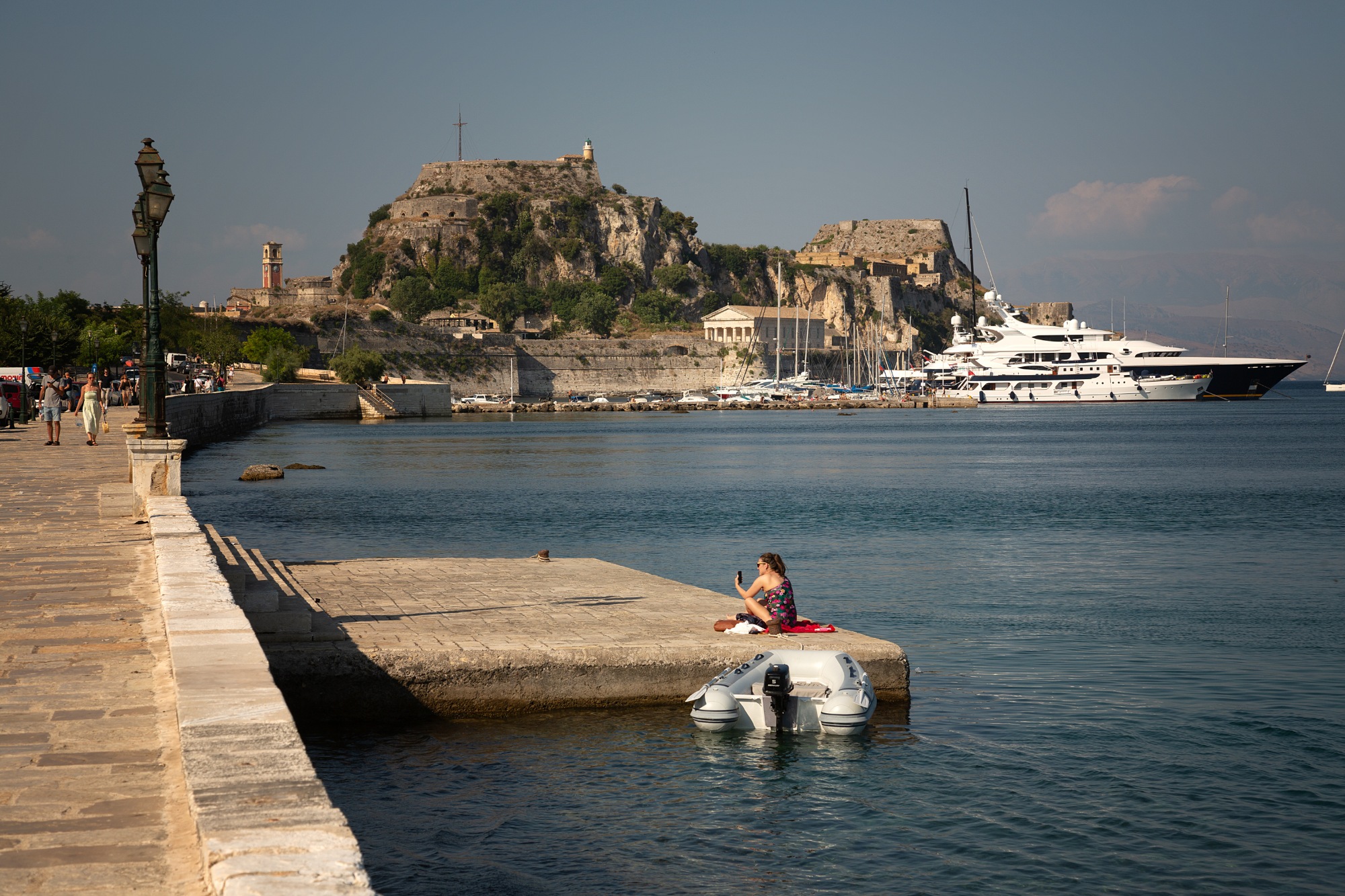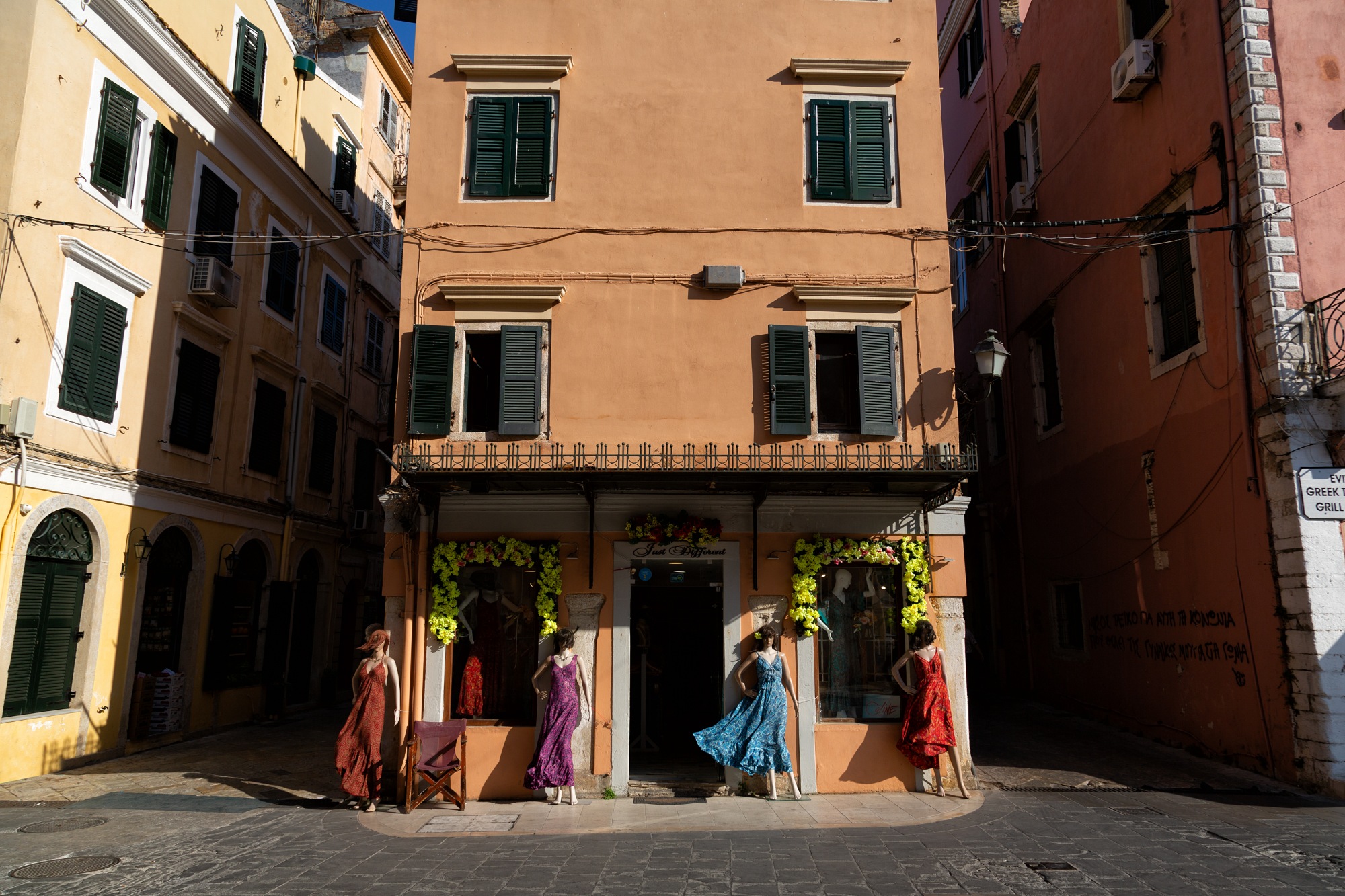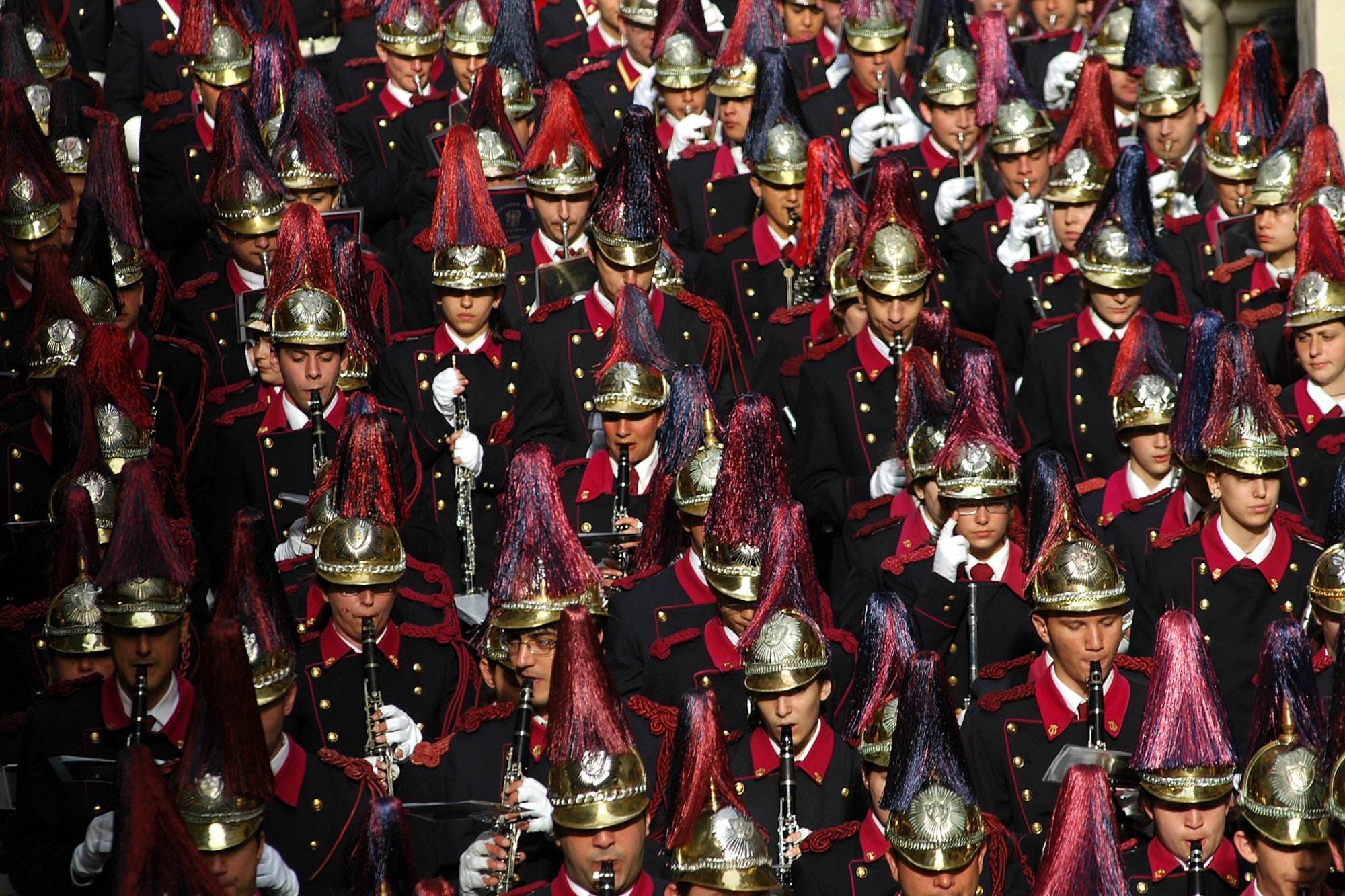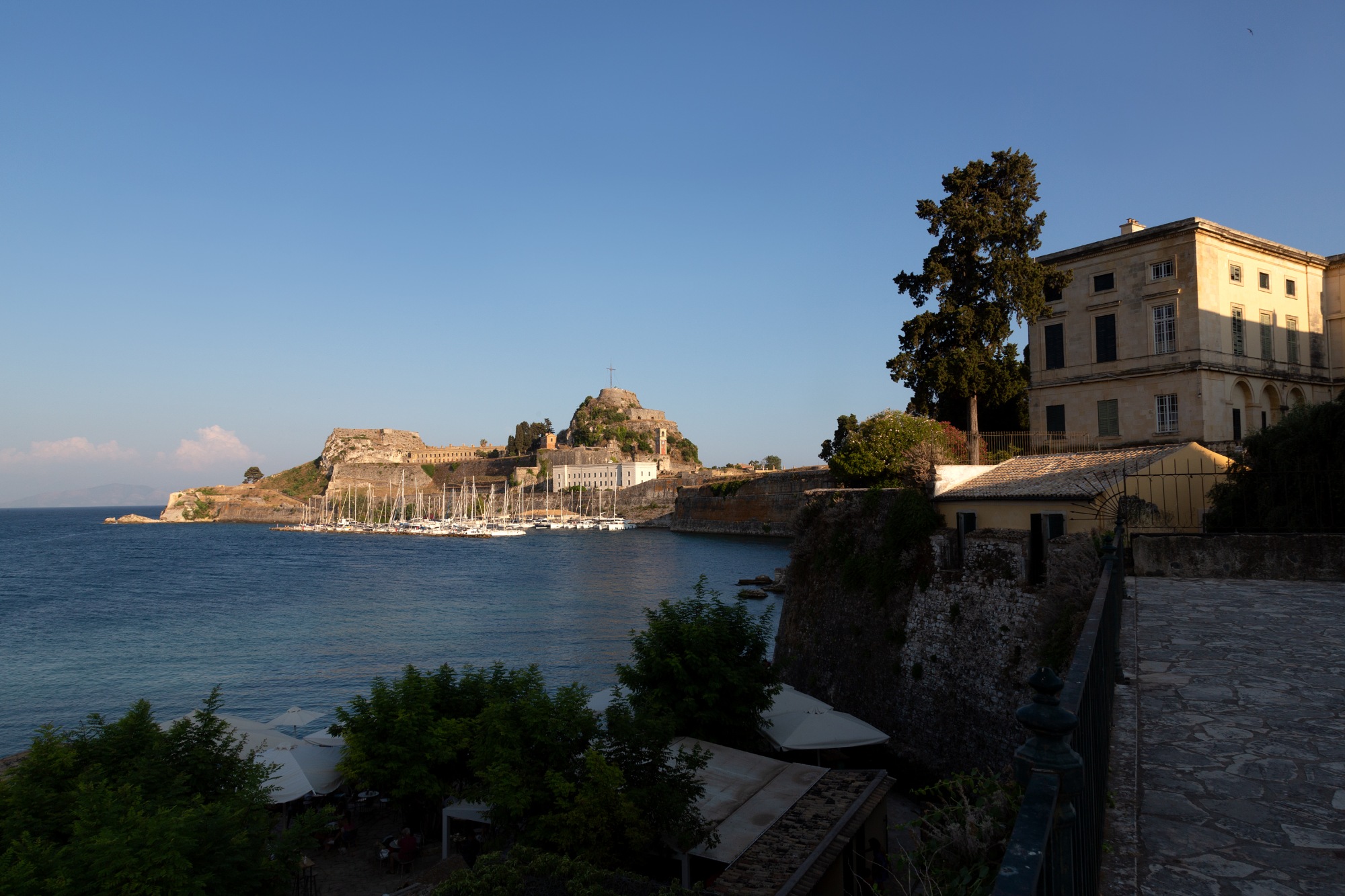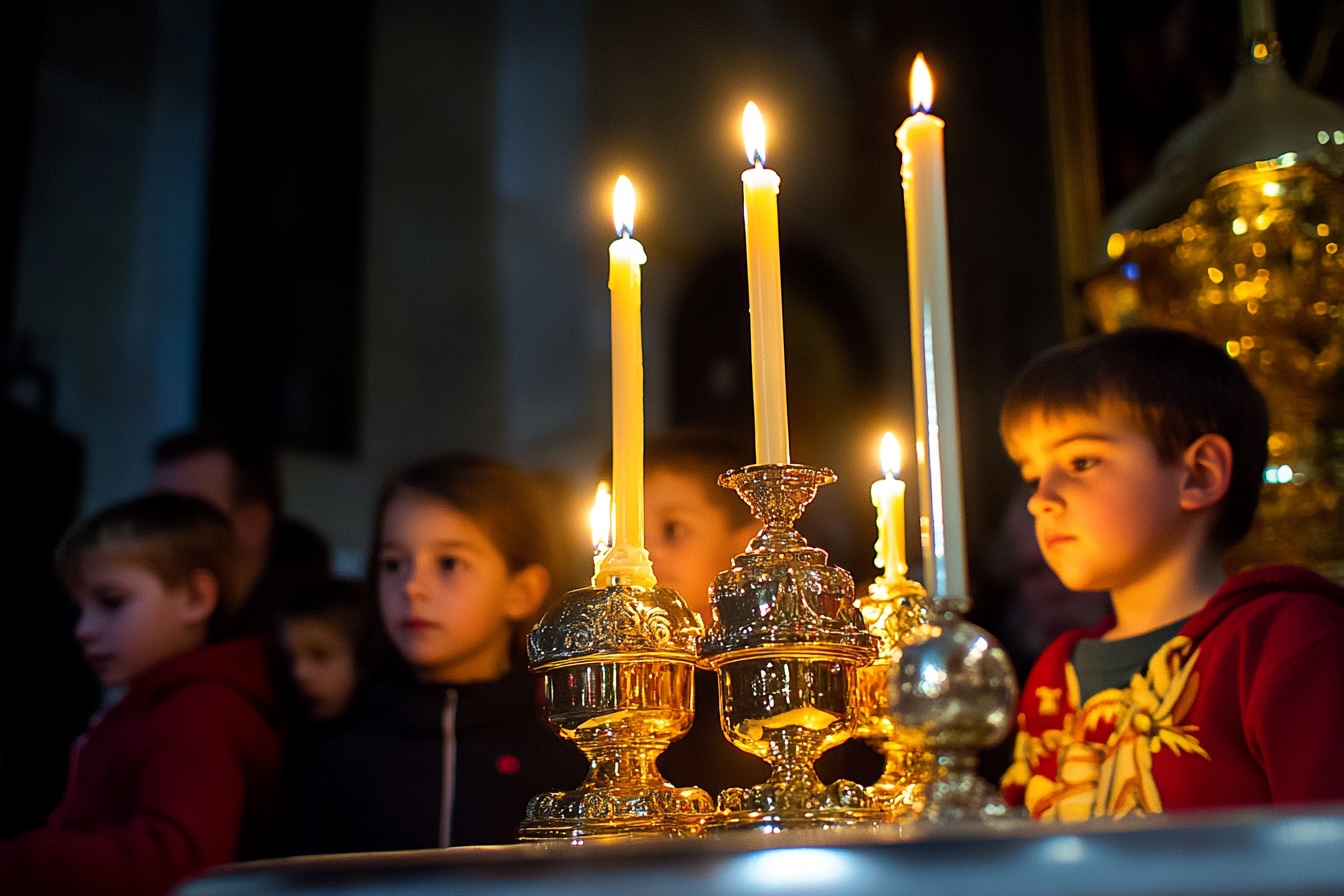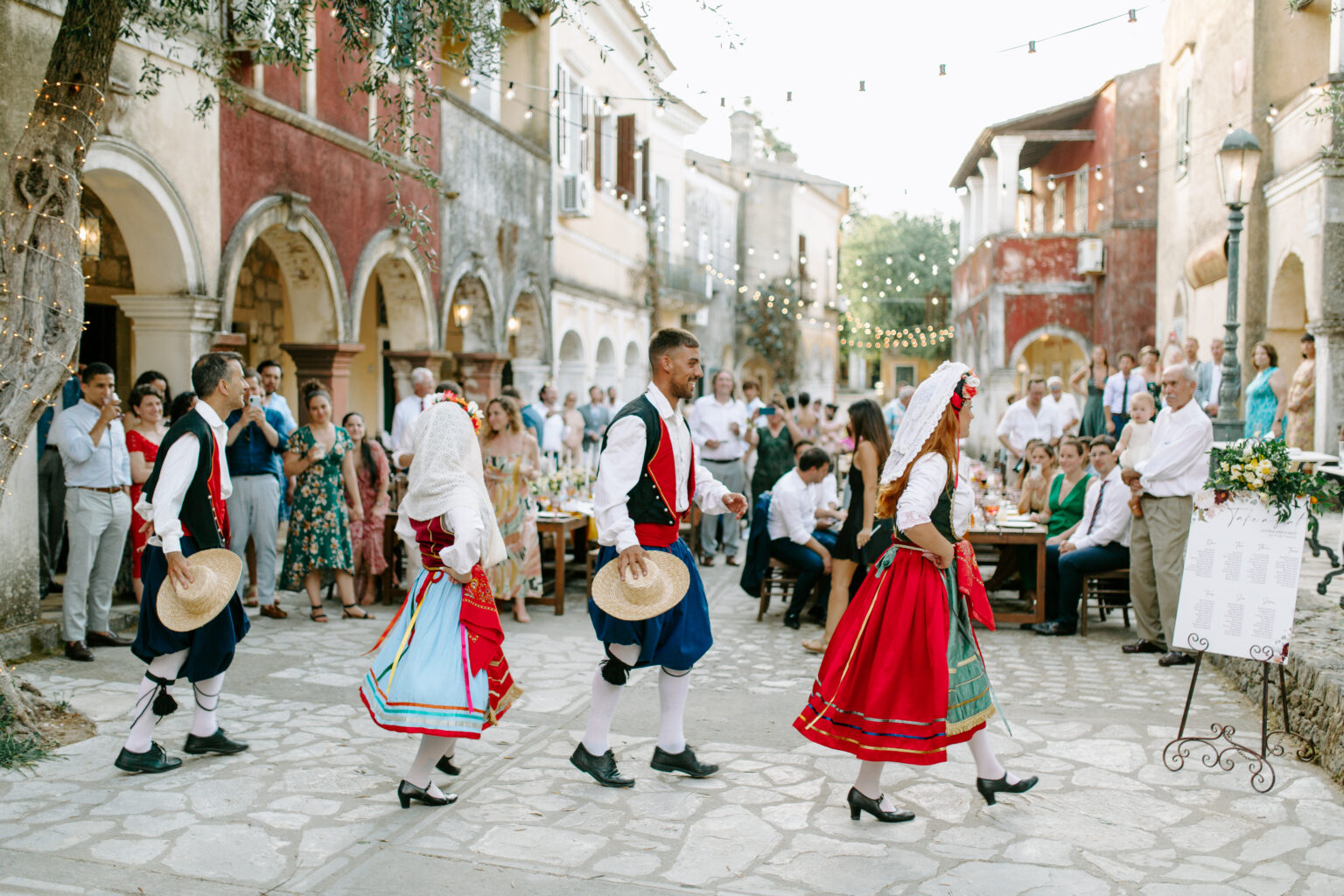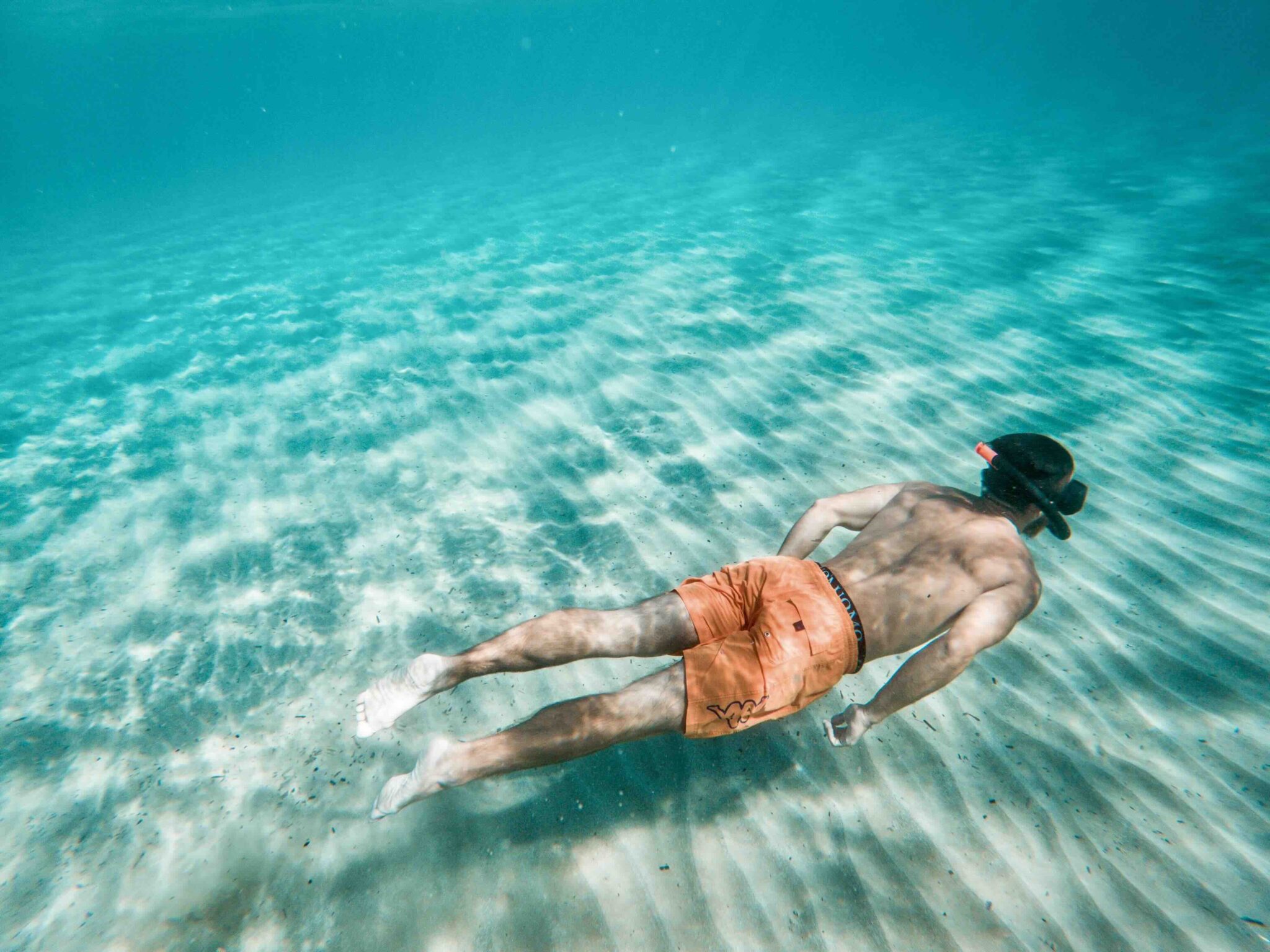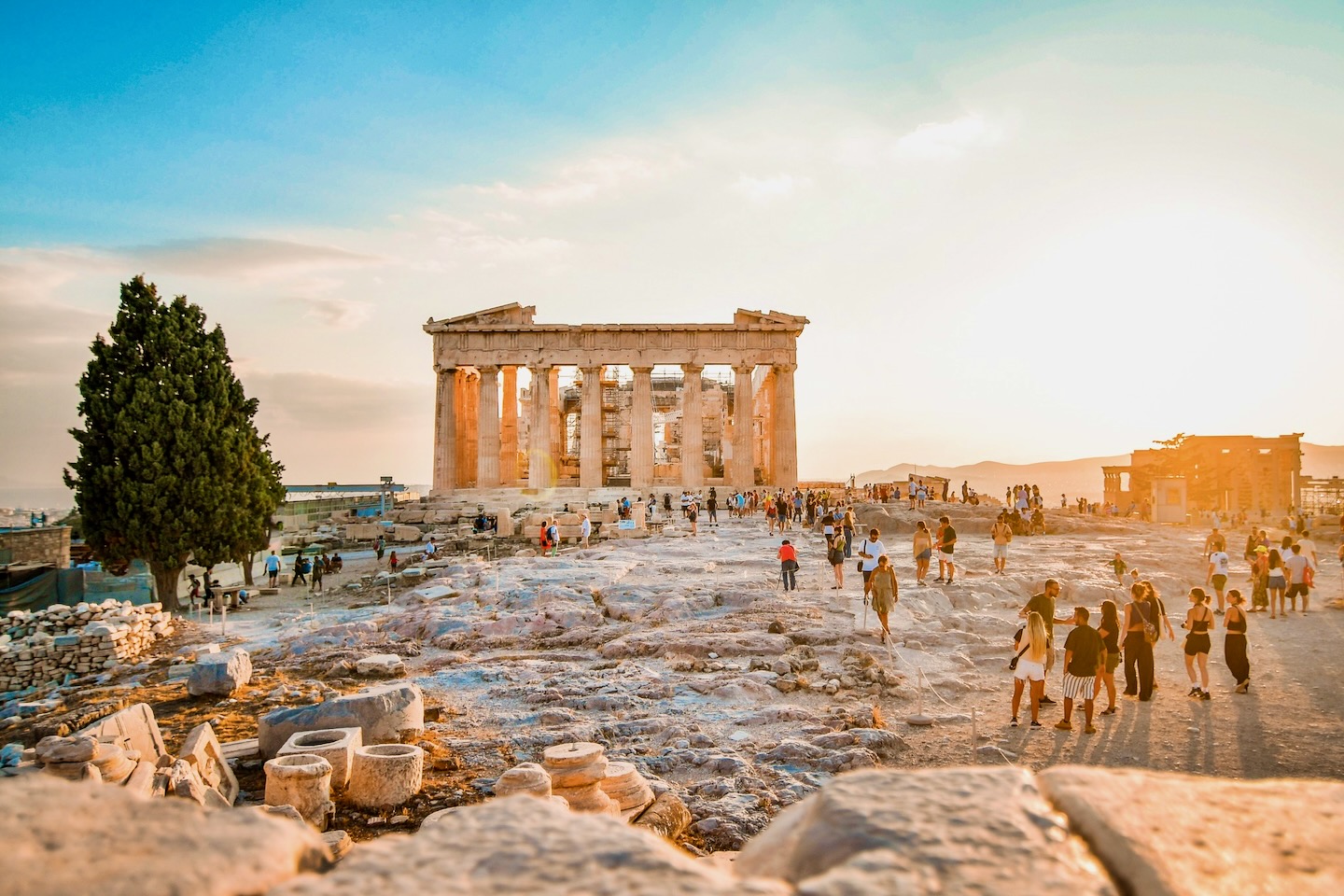The secret is to not mark out a specific route but wander freely through the districts
Have you ever heard the sky laugh? I have, numerous times, while strolling around the Old Town of Corfu. I look up and, every single time, see swallows on building roofs peeping down and gossiping about ground-level matters and the people. The resulting sound, resembling laughter, is one of the most trademark sounds of Corfu, along with the melodic dialect of locals that can’t be forgotten.
Corfu has been fortunate. A major regional earthquake that struck back in 1953 to flatten Kefalonia and Zakynthos, both further to the south in the Ionian Sea, did not impact the island. Its Old Town remained standing and, decades later, in 2007, was classified as a UNESCO World Heritage Site. A building at 18 Filellinon St, from 1497, is considered to be the town’s oldest.
Being a local, I adore every single part of the Old Town. I think the secret is to not mark out a specific route but wander freely through the cantons – and wherever this leads!
After all, no matter where you end up, the town will reward you. The Liston, Spianada and Ano Plateia areas, Old and New Fortresses, as well as the Corfu Museum of Asian Art are just some of the highlights you need to see. However, besides the more obvious, the Old Town has many other hidden gems that are worth discovering. Let’s take a look at some of these.
Dimarhiou Square, featuring San Giacomo, the Catholic cathedral of Corfu, as well as the Town Hall building, whose construction began in 1663 and was completed thirty years later to house the first opera on Greek territory, is one of the Old Town’s most distinctive landmarks. Depending on the time of day, you can enjoy coffee or cocktails at this square’s Picollo Espresso Bar (21-25 Dimarhou Kolla) and Puppet (1 Evaggelistrias), which also functions as a boutique guest house with four adorable rooms.
Mouragia is one of the most impressive districts of the Old Town and offers a sea view. It is home, amongst other things, to the Solomos Museum, the building in which the national poet Dionysios Solomos spent the last 25 years of his life. The building was restored following extensive damage caused by the Italian bombardment during World War II. The museum hosts a precious collection of Solomos’ personal belongings. The Mouragia area also features the Antivouniotissa church, a significant attraction for two reasons, firstly, as it is the oldest, most complete and best-preserved example of an Ionian-area basilica on Corfu, and secondly, because it is a museum hosting a rich collection of work by major religious icon painters from the 15th to 19th centuries.
Besides Antivouniotissa and, naturally, the Agios Spyridon church, dedicated to the island’s patron saint, the Old Town is also home to other churches possessing significant architectural interest and hosting work by major religious icon artists. One of these, Panagia Mandrakina is situated between the Boschetto public garden and the Garden of the People (Kipos Tou Laou). A small orange-red coloured church, Panagia Mandrakina has a distinctive belfry: four-sided and tower-like with a red top. Agios Ioannis tou Prodromou church, at Plakada t’Agiou square, is a four-sided basilica dating back to the late 15th century. Its altarpiece is made of Corfiot marble, while the main altar’s pyx, or church tabernacle, is of Russian technique. This church has been attended by luminaries such as Solomos, the national poet; Greek statesman Ioannis Kapodistrias, the first head of state of independent Greece; Iakovos Polylas, writer and publisher of Solomos’ work; and composer Nikolaos Mantzaros, best known for his composition that became the Greek national anthem. This church hosts a church museum. Within close proximity, Panagia ton Xenon, a three-aisled basilica, was founded in 1689 by the monk Nikodimos Kolitzas as a shelter for Epirots and other emigrants reaching Corfu to escape Ottoman-occupied Greek territory. The Corfu cathedral at Spilia, a Renaissance-style, three-aisled basilica, was built in 1577. Paintings by Michail Damaskinos (Virgin Mary, Saint George), Panagiotis Paramithiotis (Last Supper) and Emmanuel Tzanes (Saint Govdelaas) adorn the church’s interior. The two-sided “Panagia Dimosiana” painting, the oldest piece from the 15th century, is the most prized piece.
As indicated by its Italian name, Boschetto is a lovely small public garden. It offers a view, in all its glory, of the Old Fortress moat. The flower-filled garden was designed in the style of Renaissance gardens. Fountains, stone benches, busts of writers and philhellenes who lived on Corfu, and naturally, an abundance of flowers, trees and plants, all create a movie-like setting.
If struck by the urge for a swim while strolling around the Old Town – and you are carrying your swimsuit – you can take a dip at Faliraki, behind the Palace of St. Michael and St. George, the location of the Corfu Museum of Asian Art. For decades, the town’s residents have enjoyed quick swims at this spot, commonly known as “Bania tou Alekou” (Swimming at Alekos), in reference to Alekos, an old grill that existed in this area. It includes a stone-paved area where you can lay out your towel for sunbathing with a view of the Old Fortress. Nowadays, the Faliraki area features cafes, where you can sit and enjoy a coffee straight after your swim, even if still not dried. In business since 1924, Papagiorgis confectionary shop (32 Nikiforou Theotoki), next to Plakada t’Agiou, The Saint’s Square – no further detail is needed locally to refer to Saint Spyridon, the island’s patron saint – is renowned for all its sweets, but the ice cream is its main attraction, as highlighted by long queues that form during the evening hours. Fortunately, the service is lightning-fast, so you won’t need to wait long. A wide range of ice cream flavours is offered, the best being kumquat, the island’s trademark fruit. This flavour choice may sound a little folklorish or tourist-oriented but is actually superb. It comes in vanilla and dark chocolate varieties. I prefer the former. The shop is open from the morning hours.
The view from the roof garden/restaurant-bar at the Cavalieri hotel (4 Ioanni Kapodistria) is breathtaking. It looks down to Ano Plateia, the eastern section of Spianada, where you can see the Maitland Peristyle, a neoclassical monument in the shape of a rotunda that was built in 1821; the town’s Music Pavilion, a bandstand at the centre of the square used by the city’s philharmonic groups for their outdoor concerts during the summer months; as well as the Monument of the Union of the Ionian Islands with Greece. The rest of Spianada extends further to the back with a cricket ground and water fountain, or the Vagianos well, as it is commonly known. The Cavalieri hotel’s restaurant-bar is ideal for a cocktail with a view of the Old Fortress as well as moonlit Garitsa Bay.
The city’s bars, open from early in the day, are ideal for coffee, fruit juice or ginger beer while taking a break from your exploration of the cantons, or evening drinks and cocktails, until late, while watching the flow of people pass by. Open from the morning hours until night, the Liston Gastrotheque, at the iconic Liston pedestrian street, prepares special cocktails that fuse classic recipes with local products. They include the Venetian Spritz, made with Airone rosso aperitivo, kumquat liqueur infused with strawberries, Prosecco and homemade soda water. Mikro Café on Nikiforou Theotoki St is a favourite spot for tourists and locals alike. Its small tables fill to capacity in the summer. The exclusive spots under the flower-filled pergola on the small roof deck are highly sought-after. Polytechno, to the side of the New Fortress, is an art and entertainment centre. Interesting concerts, art exhibitions and cocktails may be enjoyed by the New Fortress walls. Polytechno is a nighttime attraction for the city’s alternative community. If preferring more mainstream situations, as well as a sea view, head for Azur at the Nautical Club of Corfu, where you can enjoy signature cocktails while wondering who the high-profile owners of luxury boats moored at Garitsa Bay could be. Then, you could have a second-last cocktail at Bristol, a place with superb décor – you haven’t been out for a drink in this city if you haven’t been to Bristol – followed by a final cocktail at the Liston block’s Café Kohlias, where locals like to end their nights out.
As for the city’s restaurants, La Cucina (13 Moustoxydou & Guilford), serving Italian cuisine, has been in business since 1993, winning over locals. Del Sole (17 Guilford) is another spot loved by locals. Located at Cofinetta square, Limoncello, serving pizza and pasta selections, was launched in the summer of 2020. Prime-positioned Rex (66 Kapodistriou), which has maintained high standards since 1932, is a classic spot for local specialties such as sofrito (beef stew), bourdeto (spicy baked fish) and pastitsada (pasta topped with meat braised in a tomato-based sauce).
Recipes from Corfu and other parts of Greece may be enjoyed at Tavernaki Tis Marinas (35 Velissariou), in the Ovriaki district, next to Spilia. The food here is filled with motherly affection. The seaside restaurant at the Corfu Sailing Club, by the Mandraki port area of the Old Fortress, also promises a special dining experience. It serves refined Mediterranean dishes. For assorted meze dishes with plenty of beer – try the local Corfiot red draught beer and you will not regret – Firi Firi Beer House (1st Byway, 1 Solomou), at the base of the New Fortress, is an ideal choice.
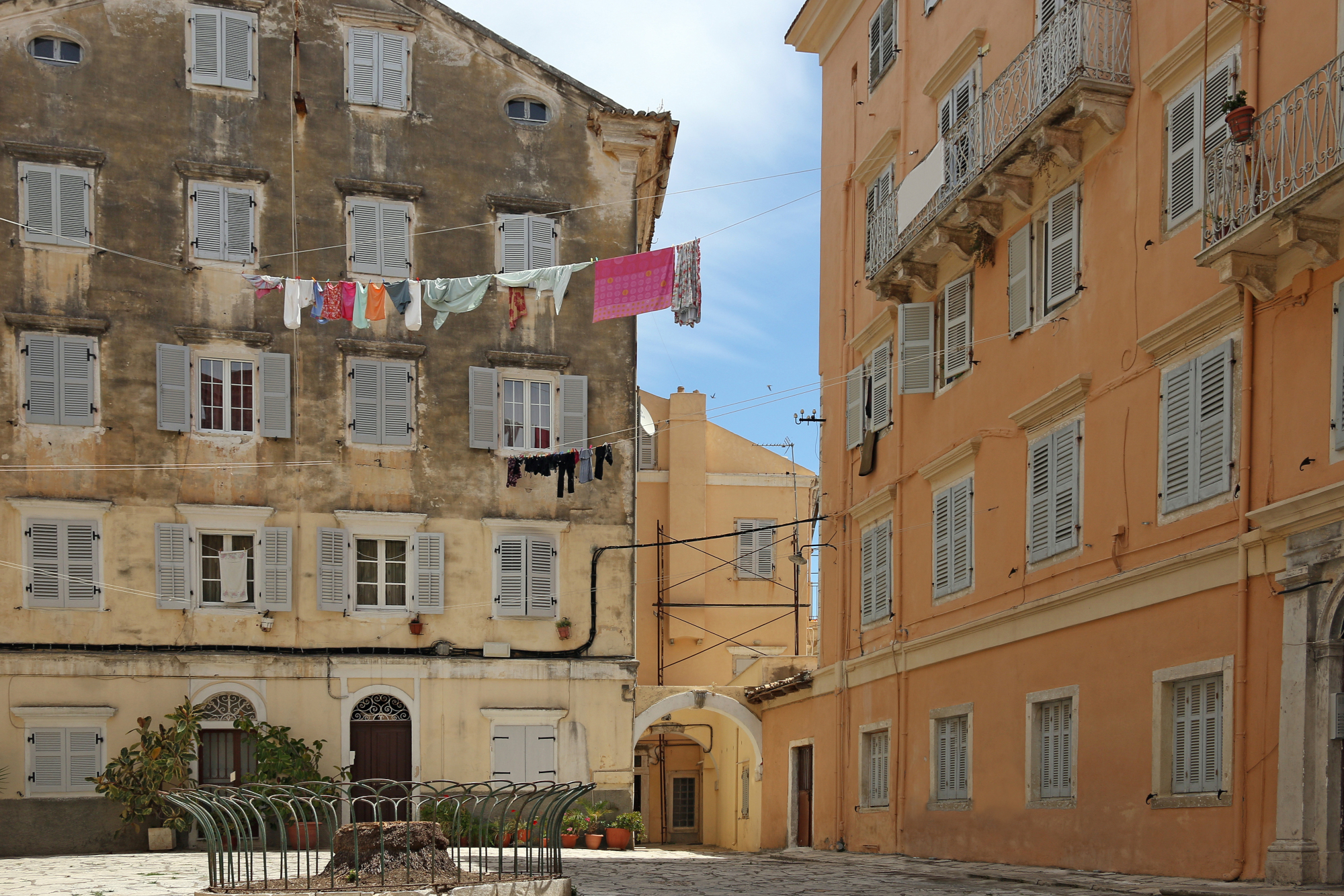
I’ve left, for the end, my favourite spot in the entire Old Town of Corfu. It is the delightful little Kremasti Square, a setting whose beauty can stir emotions. This paved square hosts the 16th century Panagia Kremasti church, featuring a trademark hanging lantern at its exterior; a 17th century Venetian well; surrounding buildings with earthy coloured facades; and the Venetsianiko Pigadi (Venetian Well) restaurant, which, since 2014, has added its high-standard gastronomic touch to this unique location. No, it is not a dream, but beauty that will remain unforgettable, even if experienced just once.



